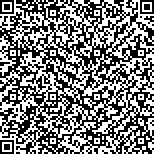| 本文已被:浏览 1799次 下载 1565次 |

码上扫一扫! |
|
|
| 黄、东海夏季浮游植物群落特征及其影响因素分析 |
|
赵越1,2, 于仁成1,3,2,4, 孔凡洲1,3,4, 张清春1,3,4, 耿慧霞1, 代丽1,2, 王锦秀1,2, 周名江1
|
|
1.中国科学院海洋研究所 海洋生态与环境科学重点实验室 青岛 266071;2.中国科学院大学 北京 100049;3.青岛海洋科学与技术试点国家实验室 海洋生态与环境科学功能实验室 青岛 266071;4.中国科学院海洋大科学研究中心 青岛 266071
|
|
| 摘要: |
| 黄海和东海是西北太平洋重要的边缘海,复杂的海洋环流和丰富的陆源物质输入共同影响着海域环境和生态系统。为了解黄、东海浮游植物群落组成、分布状况及其影响因素,本研究于2015年8—9月期间,通过流式细胞仪和形态学观察等方法,调查了该海域微型真核藻类、微微型真核藻类、聚球藻(Synechococcus)、原绿球藻(Prochlorococcus)以及浮游植物优势种的组成、丰度与分布情况,并基于浮游植物种类和丰度状况进行了聚类分析。结果表明,黄、东海浮游植物群落组成存在明显差别,黄海海域微型浮游植物丰度高于东海,而微微型浮游植物丰度低于东海,原绿球藻主要分布在东海海域。黄、东海海域浮游植物群落组成及分布状况与海域环境特征密切相关。夏季黄海海域相对封闭,受黄海冷水团控制,表层海水中高丰度的微型真核藻类主要出现在冷水团西侧边缘锋面区。东海海域受到长江冲淡水和黑潮水向岸入侵的强烈影响,在长江口邻近海域出现硅藻赤潮,而原绿球藻呈现出自外海向近岸输送的分布态势。相关结果可望为进一步探讨陆源物质输入和邻近大洋对我国近海生态系统的影响及机理提供依据。 |
| 关键词: 浮游植物 赤潮 聚类分析 黄海 东海 |
| DOI:10.11693/hyhz20181100268 |
| 分类号:Q178 |
| 基金项目:科技部重点研发项目,2017YFC1404304号;青岛海洋科学与技术国家实验室鳌山科技创新计划项目,2016ASKJ02号;中国科学院战略性先导科技专项,XDA11020304号;国家自然科学基金委-山东省联合基金项目,U1606404号。 |
|
| FEATURES OF PHYTOPLANKTON COMMUNITIES AND THEIR CONTROLLING FACTORS IN THE YELLOW SEA AND THE EAST CHINA SEA IN SUMMER TIME |
|
ZHAO Yue1,2, YU Ren-Cheng1,3,2,4, KONG Fan-Zhou1,3,4, ZHANG Qing-Chun1,3,4, GENG Hui-Xia1, DAI Li1,2, WANG Jin-Xiu1,2, ZHOU Ming-Jiang1
|
|
1.CAS Key Laboratory of Marine Ecology and Environmental Sciences, Institute of Oceanology, Chinese Academy of Sciences, Qingdao 266071, China;2.University of Chinese Academy of Sciences, Beijing 100049, China;3.Laboratory for Marine Ecology and Environmental Science, Pilot National Laboratory for Marine Science and Technology(Qingdao), Qingdao 266071, China;4.Center for Ocean Mega-Science, Chinese Academy of Sciences, Qingdao 266071, China
|
| Abstract: |
| The Yellow Sea (YS) and the East China Sea (ECS), as two typical marginal seas of western Pacific Ocean, are featured by the unique circulation structure and huge terrestrial input, which will affect the marine environment and ecosystem in this region. To understand the features of phytoplankton communities and their main impact factors, two cruises were conducted in the YS and the ECS from August to September in 2015. Distributions of four pico- and nano-sized phytoplankton assemblages, including nanoeukaryotes, picoeukaryotes, Synechococcus and Prochlorococcus, were studied using flow cytometry, and the dominant phytoplankton taxa were distinguished based on morphological observation using inverted microscope. Cluster analysis was performed based on the phytoplankton composition and abundance. Results show a significant difference in phytoplankton community between the YS and the ECS. Nanoeukaryotes was more abundant in the YS while the abundance of picoeukaryotes was higher in the ECS. Distribution of Prochlorococcus was mainly confined in the ECS. The compositions and distributions of phytoplankton communities were in close relationship with marine environmental features in the YS and ECS. The YS was largely controlled by the YS cold water mass, and high abundance of nanoeukaryotes appeared mainly at the surface of western YS near the front of YS cold water mass. The ECS was affected by the Changjiang (Yangtze) River Diluted Water and Kuroshio intrusion in summer time. A bloom of diatoms was observed in the coastal water adjacent to Changjiang River estuary, and the distribution of Prochlorococcus reflected the intensive intrusion of Kuroshio branches in the ECS. The results of this study shall provide a basis to better understand characteristics of coastal ecosystems in the Chinese marginal seas under the influences of both terrestrial input and oceanic impacts. |
| Key words: phytoplankton red tide cluster analysis the Yellow Sea the East China Sea |
